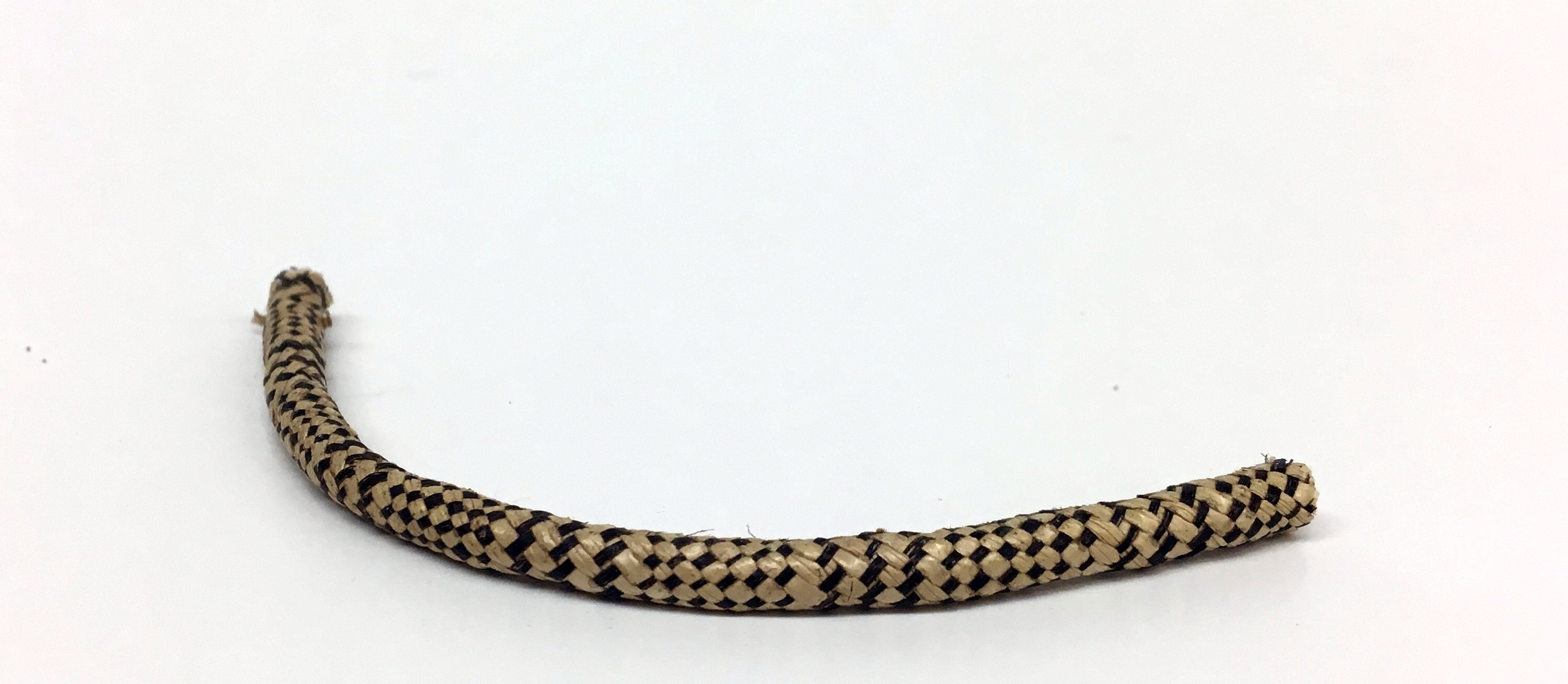
Kan̄ūr (belt)
jab (jān l̗o̗) (hibiscus fiber)
maan (pandanus leaves)
ED# 14653
Kan̄ūr in ej jerbal n̄an lukwōj nieded ko ruo im kōrā ro rej kōn̗aki āinwōt nuknuk ko aer. Kan̄ūr in ej kōm̗m̗an jān maan̄ ko rej kiiji im l̗ōōti ippān doon jān jabōn n̄an jabōn m̗ae iien eo mijel in āinl̗o̗k wōt mijel in juon addi in pā in rūtto. Emāron̄ tōpar en̄oul-ruatimjuon ne aitokan. Āinde in aer pirōki ippān doon n̄an kwal̗o̗k kōjekjekin unokan. Ālikin rej kūtimi kōn jab eo. Kilen kakilmeej jab in, rej iiōki mālle ko ippān dān. Innām rej kobaik l̗o̗k dān in im iniki jān leen jon̄ eo bwe en jab jāmeej kilmeej eo ak en māār meej.
This belt is used to tie the two fine-woven women’s clothing mats together. It is made out of a string of pandanus leaves that are sewn together from end to end until the width is about the same as an adult’s finger. It can reach roughly 49 feet. The pandanus leaves are braided in a spiral to show the patterns. Then it is wrapped with the hibiscus fiber. To obtain black, roasted coconut shells are mixed with water. Then juice extracted from the mangrove fruit is added to help keep the black stain permanent.

Add a Comment